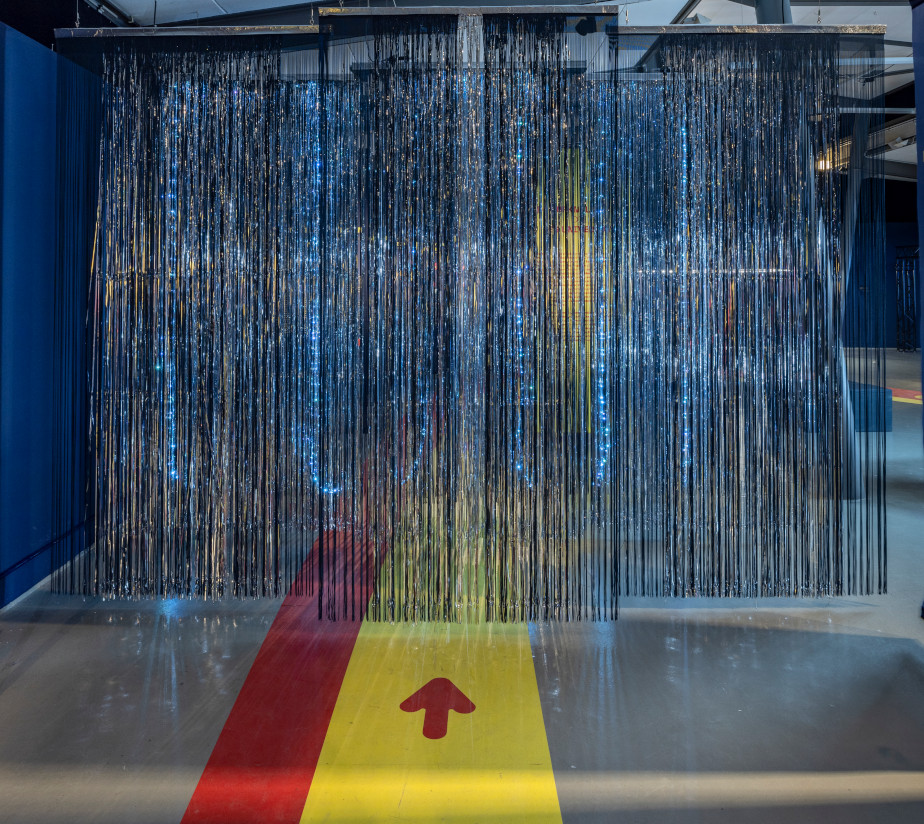invisible universe
About 380,000 years after the Big Bang, our still relatively young universe reached an important milestone. It was still very hot, but just cool enough for neutral atoms to form from the electrons, neutrons and protons that had been flying around freely until then. The light particles, photons, which had been created and absorbed over and over again in the time before, could suddenly move freely - all of a sudden the universe became transparent. In the reverse conclusion this also means that before this time no light could escape from the "hot mush". Telescopes are of no use to us here - science had to develop other devices to track down the early universe: Particle accelerators.
- Cosmic
background
radiation - first
light - Spark
chamber - Cloud
chamber - "Frassek's
Space
Collector" - play
around
with
gravity - dark
matter - Dark
Matter
Simulator - Dark
matter
halos - Into the
invisible
Cosmic background radiation
The “view through the window” shows the distribution of cosmic background radiation. It is a remnant of the Big Bang and the oldest light in the universe. Its properties tell us more about the state of the universe when it "suddenly" became transparent to this radiation about 380,000 years after the Big Bang. At this time, the universe was almost perfectly homogenous – a little bit like the surface of a lake on a windless day. The bright and dark areas show the tiny variations in density of this early universe. To make them visible the colour contrast has been enhanced by a factor of more than 10,000. These variations were the basis for the formation of our stars and galaxies today. Therefore, cosmic background radiation provides direct evidence that the Big Bang theory is correct.
Cosmic background radiation can be used to calculate all the major characteristics of our universe, such as its age, density, and development over time.
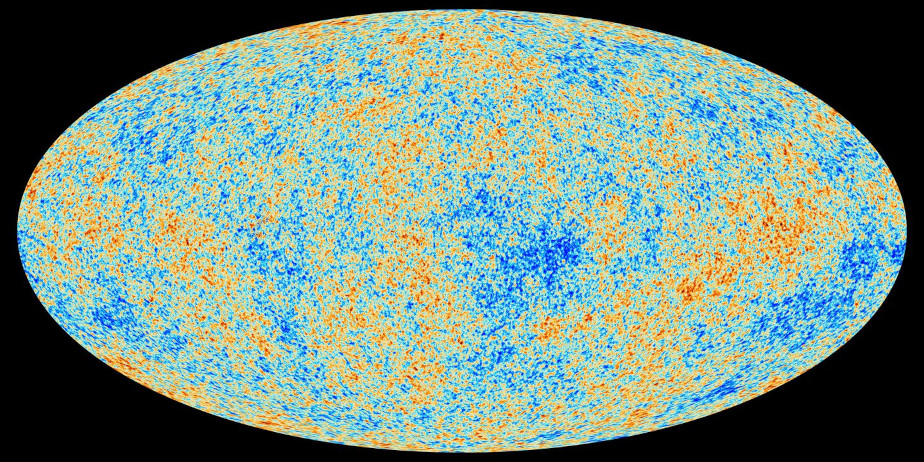
The universe’s first light
Photons (particles of light) could not cross the young, very hot universe unhindered. On their journeys they collided with electrically charged free protons and electrons. Only once the universe had cooled down to 2,700 degrees was it possible for neutral atoms to form. This meant that photons could pass unobstructed and travel through the universe. These photons form the cosmic background radiation, which we can still observe today.

Spark chamber
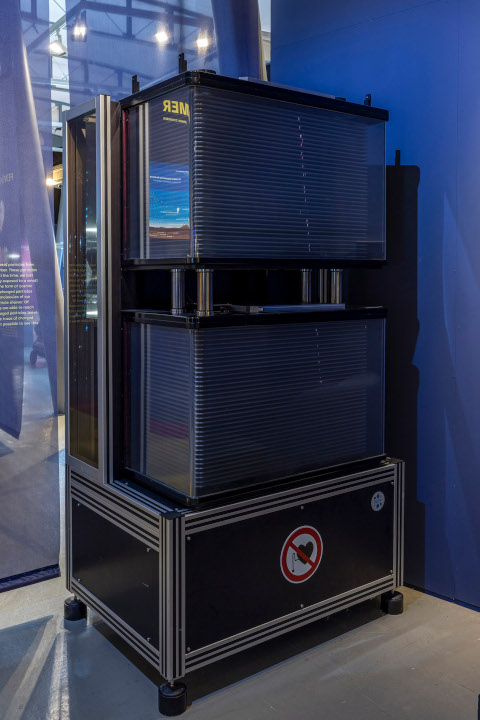

Cloud chamber
This cloud chamber makes invisible charged particles visible. These particles constantly surround us. The chamber is filled with a supersaturated air-alcohol mixture (ethanol vapour). When a charged particle passes through the gas, it ionises individual atoms of the gas. Like a condensation trail of a plane in the sky, the flight path of the charged particle becomes visible as a condensation trail because the ions become condensation nuclei on which the saturated alcohol vapour can deposit and leave visible traces.

Jan Köchermann
Frassek's Space Collector / film, 2018
Frassek's Cellar, 2018
Frassek's Space Collector / model, 2018
In the 1960s, the forgotten particle physicist Hubertus M. Frassek invented an automobile with a funnel-shaped collector as a measuring device to prove the existence of tiny black holes. Jan Köchermann let his reconstruction of Frassek's Space Collector first search for minute black holes on the DESY premises in Hamburg in 2017: the starting point of an artistic research project that has manifested itself in multiple forms. In blurred sepia tones, Köchermann's Super 8 film follows the eccentric scientist on his futuristic mission in the funnel vehicle. A peephole installation, in turn, provides a view of Frassek's Cellar, in the depths of which a dark vortex leads into nothingness like a black hole. As a miniature replica, the Space Collector makes reference to the imagination-driven vehicles of bold visions that provide the decisive impetus for scientific knowledge. Köchermann's spatial interventions and constructions are models of an expanded perception. They give shape to the inconceivable and make the invisible palpable—extending way beyond Frassek's Space Collector.
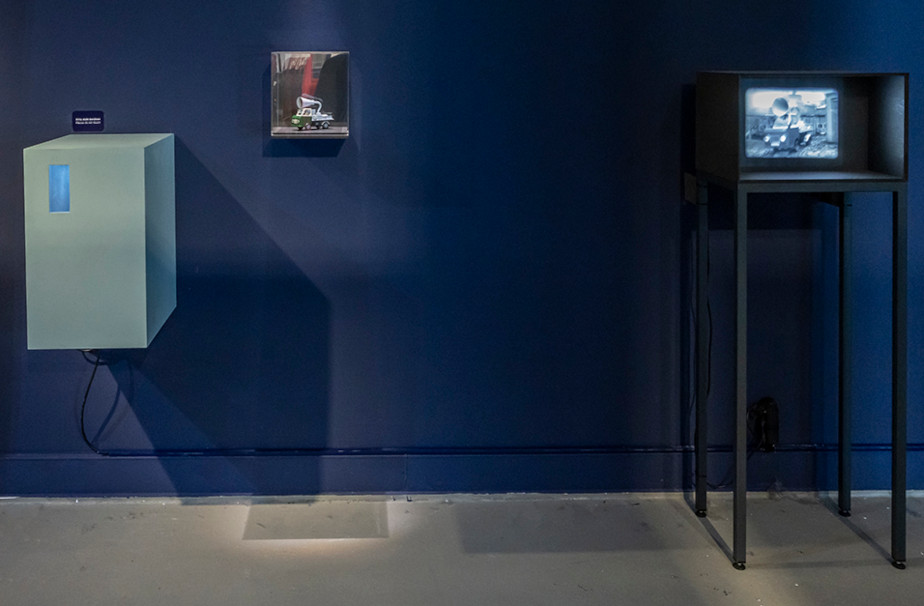

App "Trapped in Gravity"
Why are black holes black? What are gravitational waves? And what can we learn about the universe by observing gravitational waves? The game app Trapped in Gravity provides playful insights into the physics behind mass, gravitational forces and black holes. The game was developed by researchers from the Cluster of Excellence Quantum Universe.
Mysterious dark matter
Around 26 percent of the universe consists of a form of matter that we have never seen directly.
Unlike visible matter, this so-called dark matter can neither emit nor absorb light and is therefore invisible to us. So far, it can only be detected indirectly through its gravitational effect on visible matter.
Researchers suspect that dark matter was not always "invisible". Fractions of a second after the Big Bang – when the universe was filled with a hot plasma – it began to interact actively with the matter we know. Collisions of particles of matter known to us created new particles of dark matter. As the universe continued to cool, a remnant of dark matter remained.

Dark Matter Simulator
Would you like to go on a little scavenger hunt for dark matter? Maybe you can figure out where additional mass is hiding by observing the motion of little test particles.
Dark matter halos
In the outer areas of spiral galaxies, stars spin around the centre of the galaxy at such a speed that according to the laws of physics the galaxies should disintegrate. It is thought that they survive because they are embedded in a mysterious type of matter which holds them together. This halo of dark matter can be calculated by observing the movement of the stars.
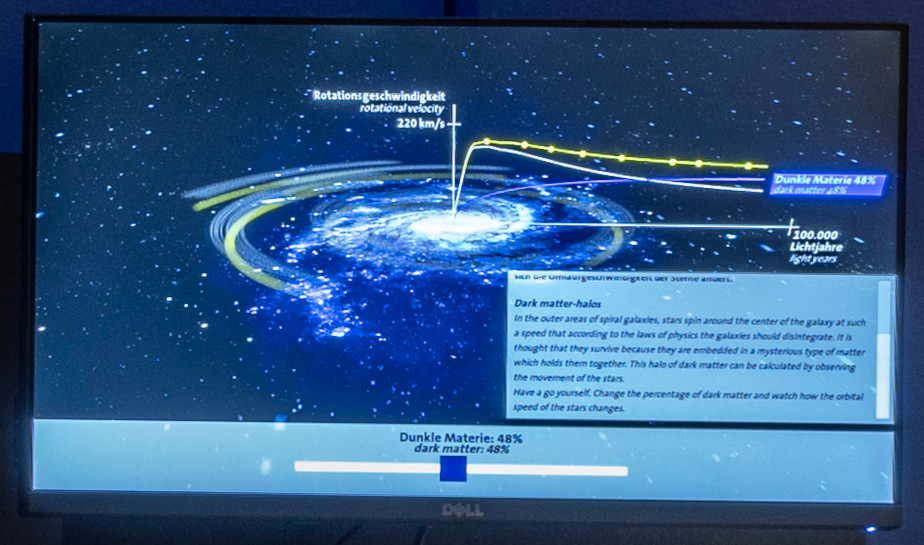
Into the invisible
